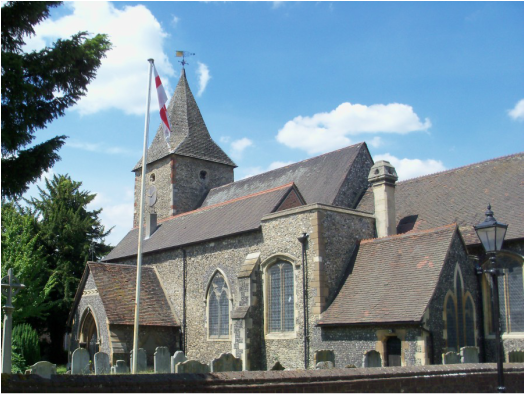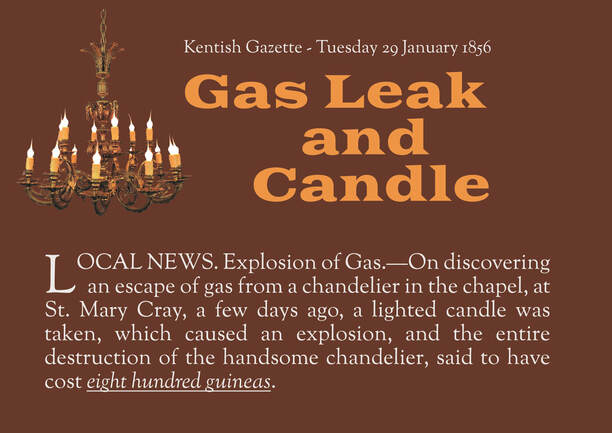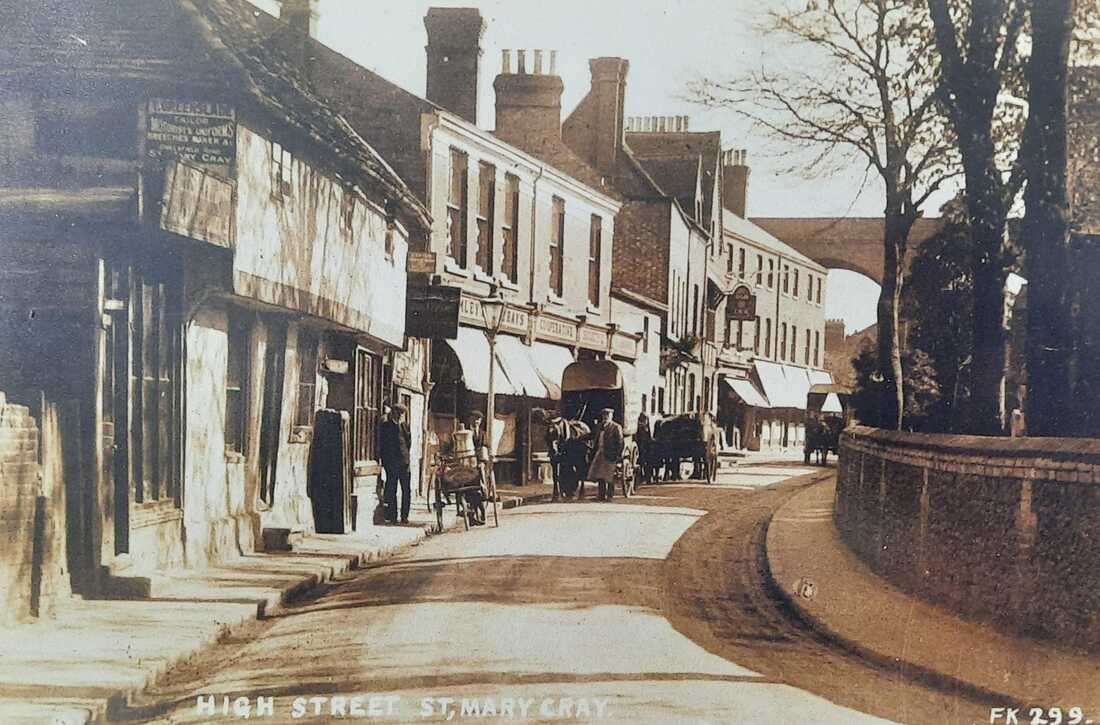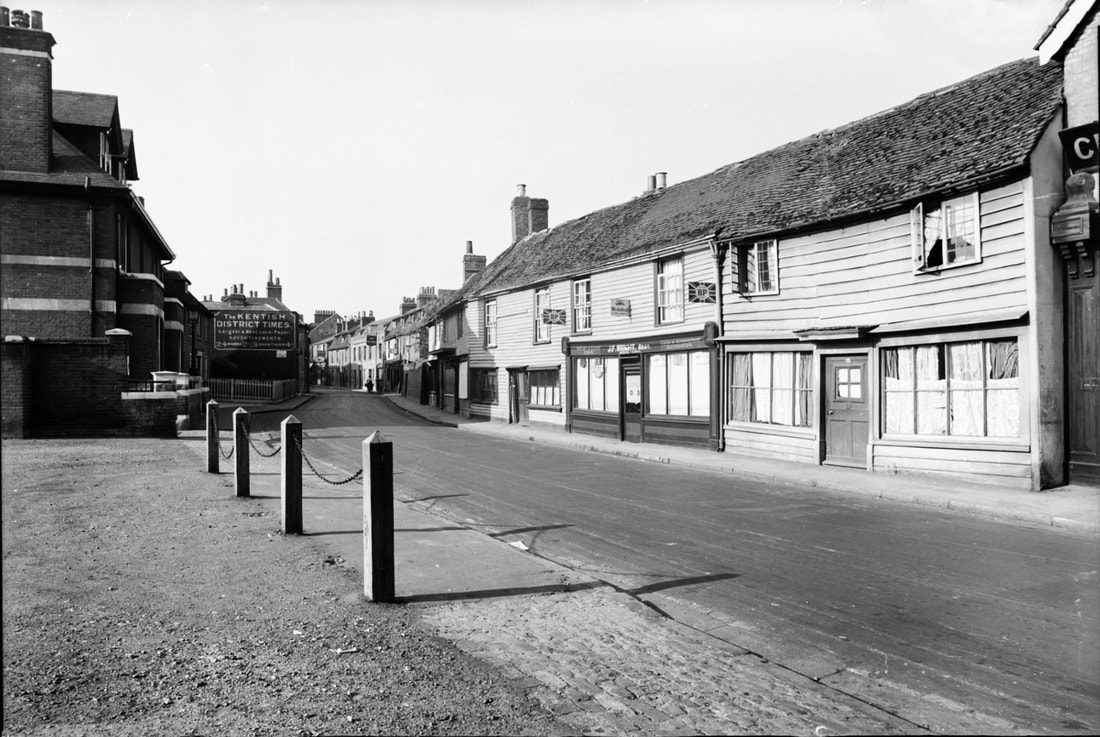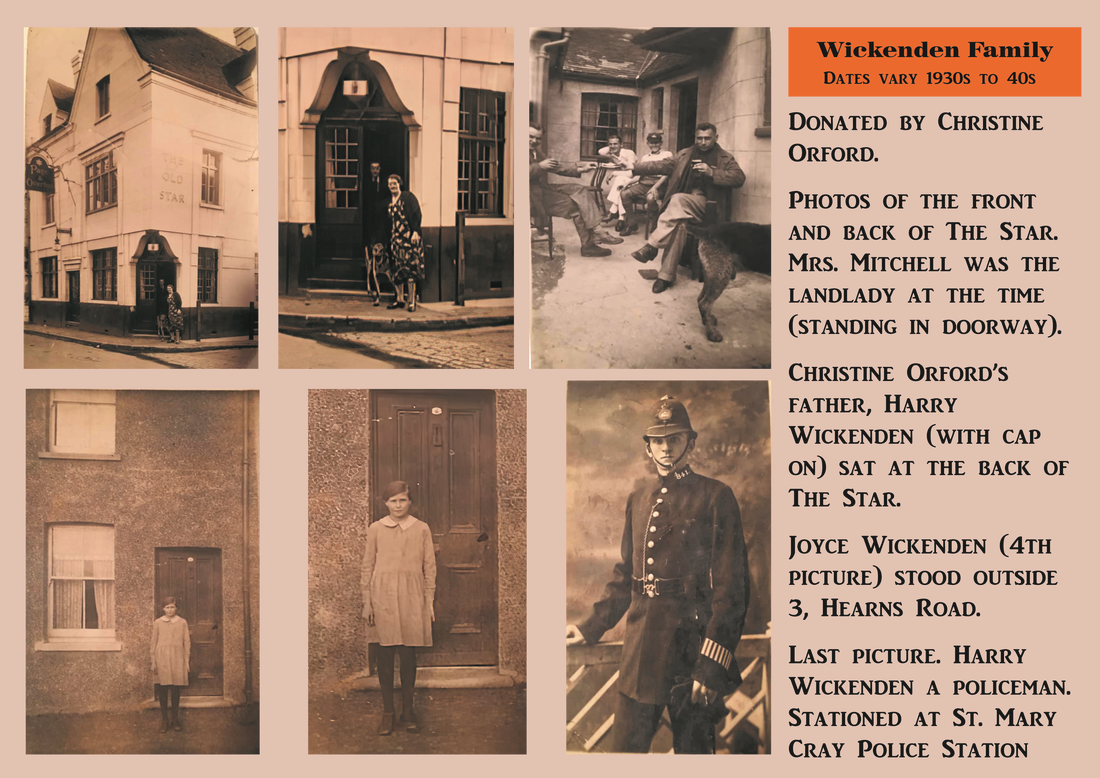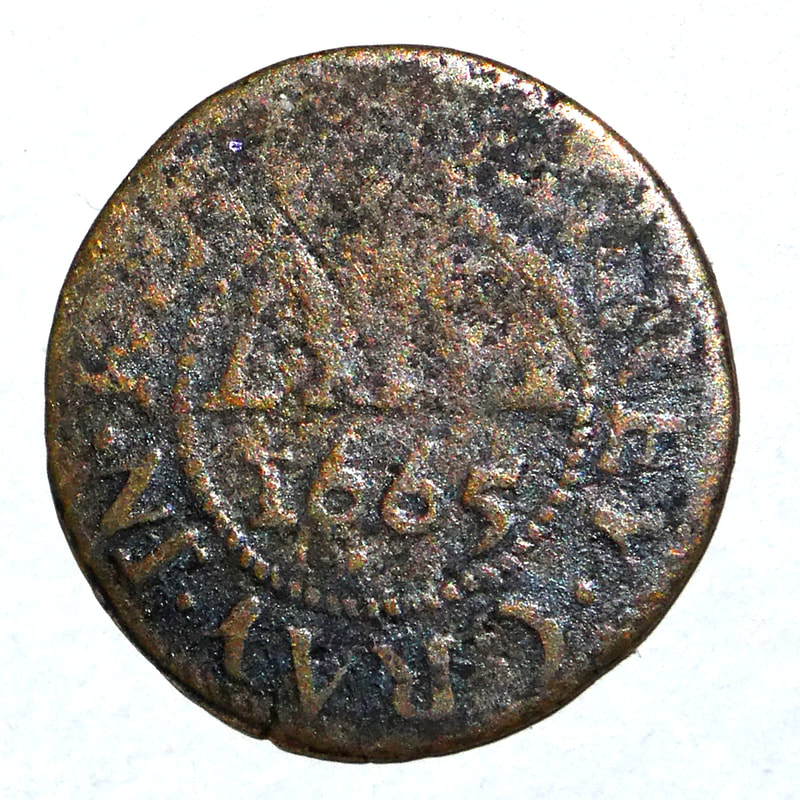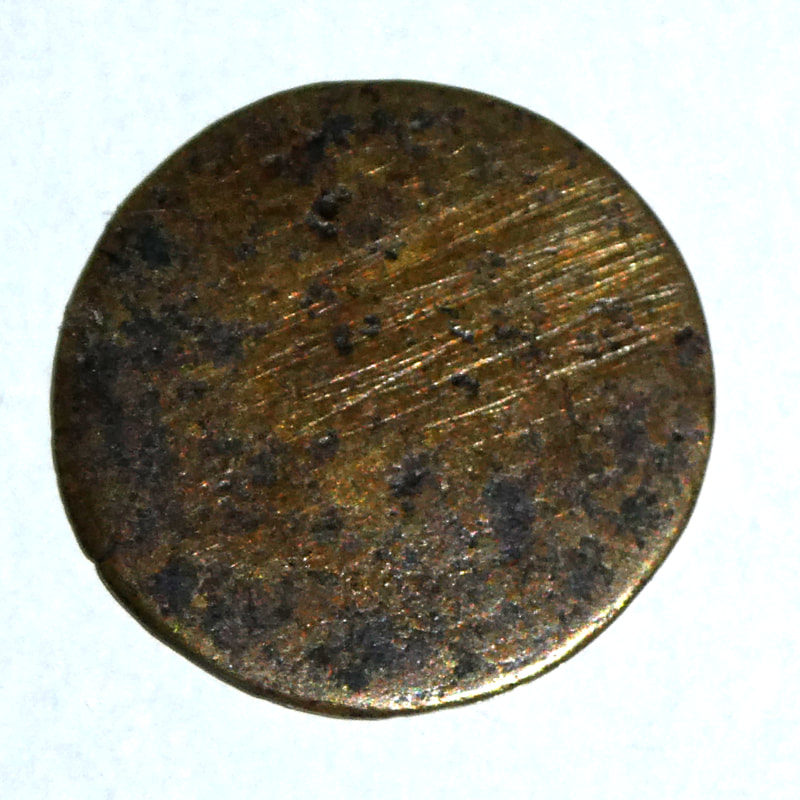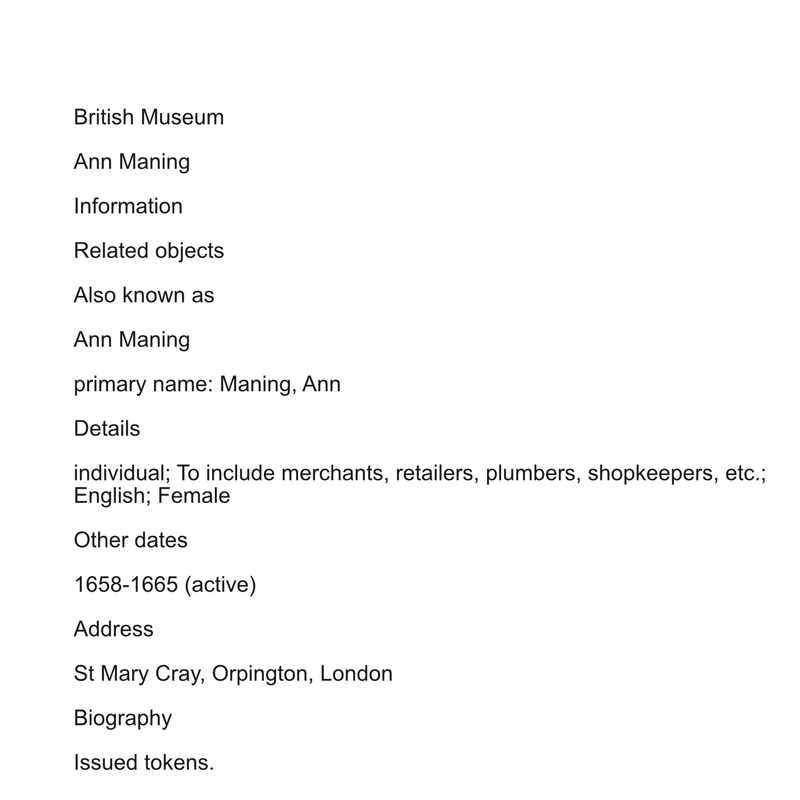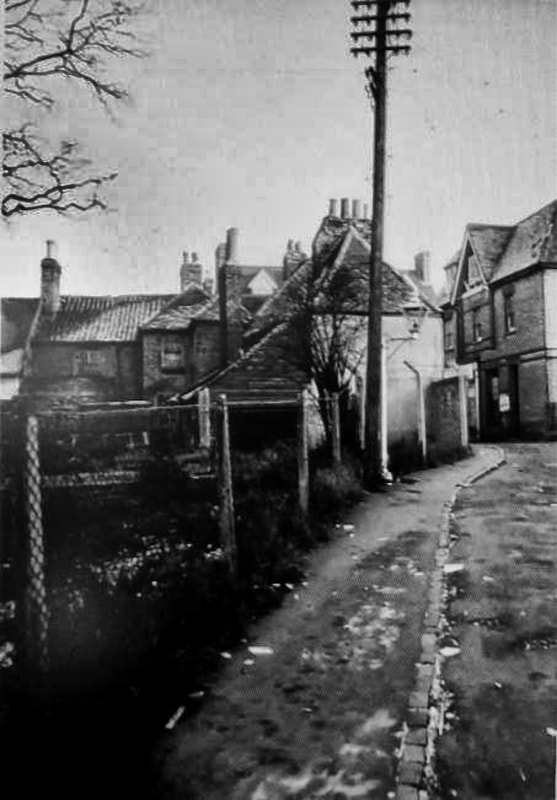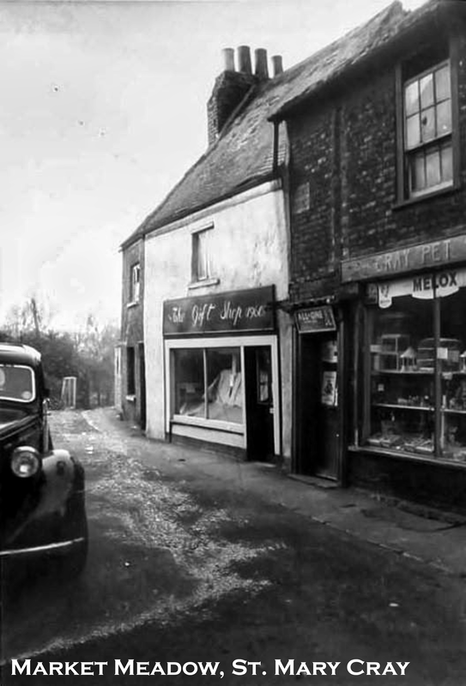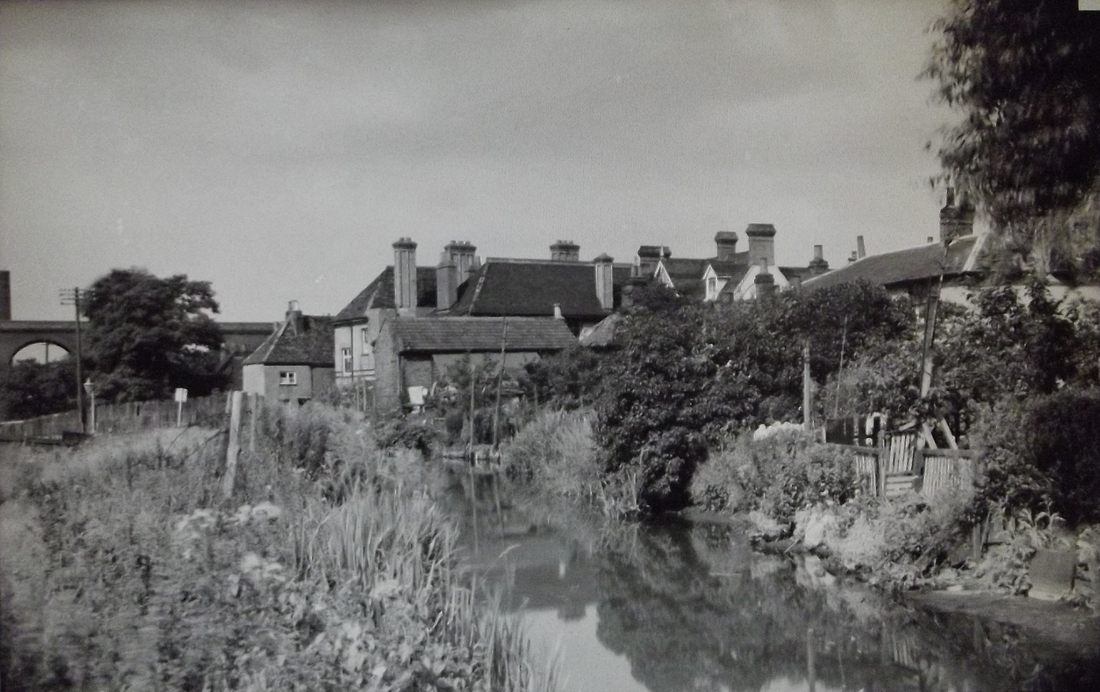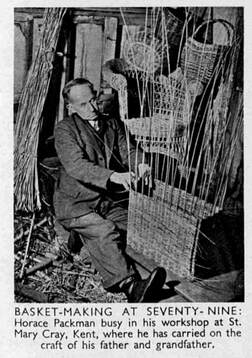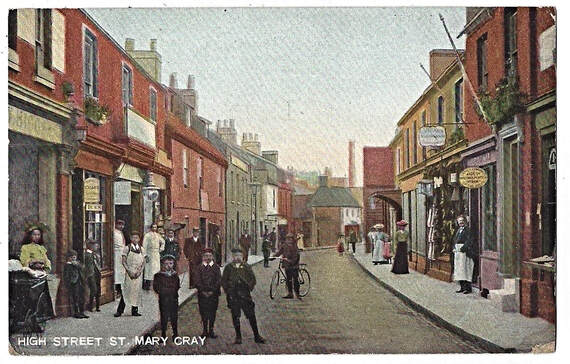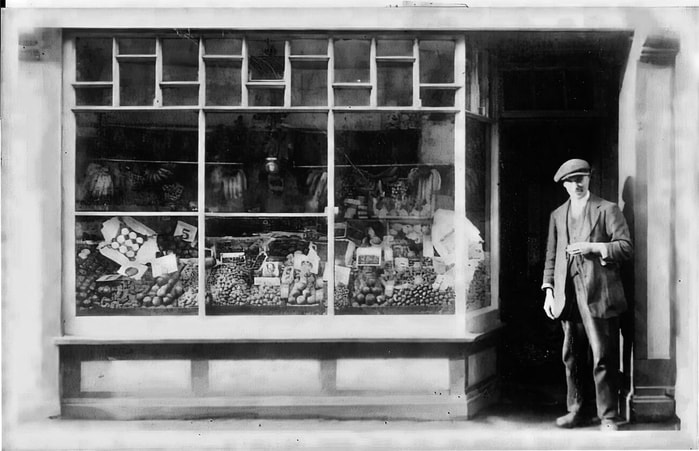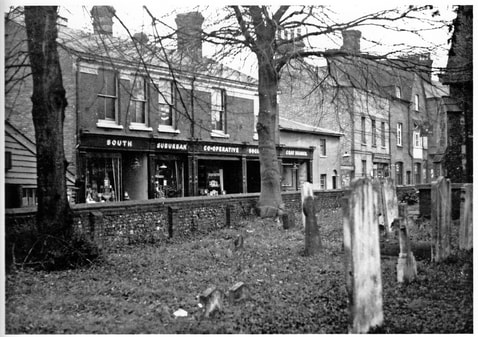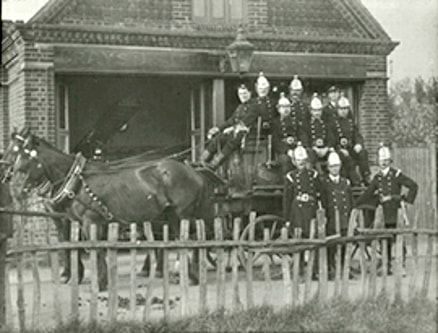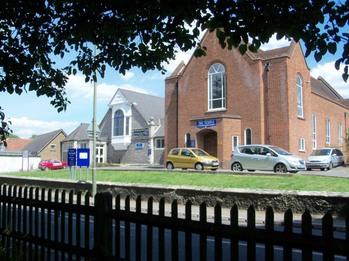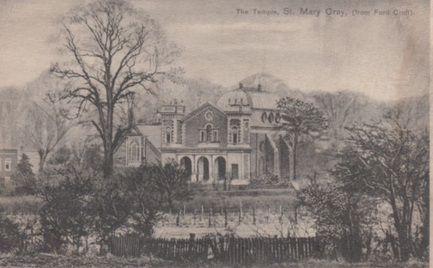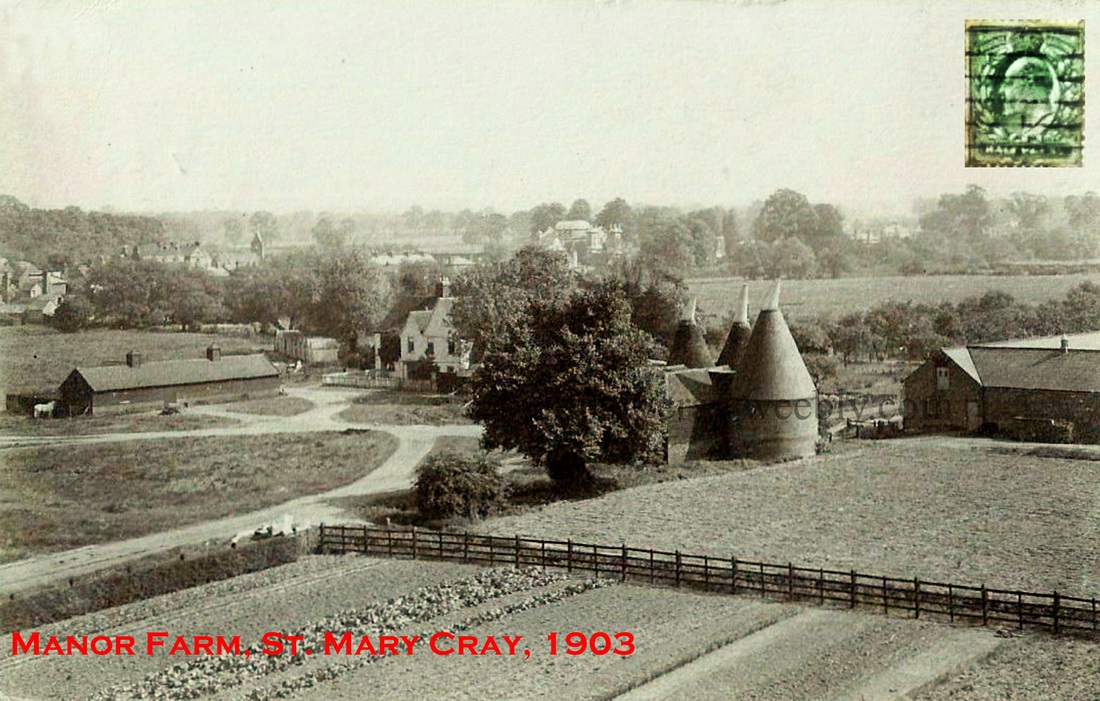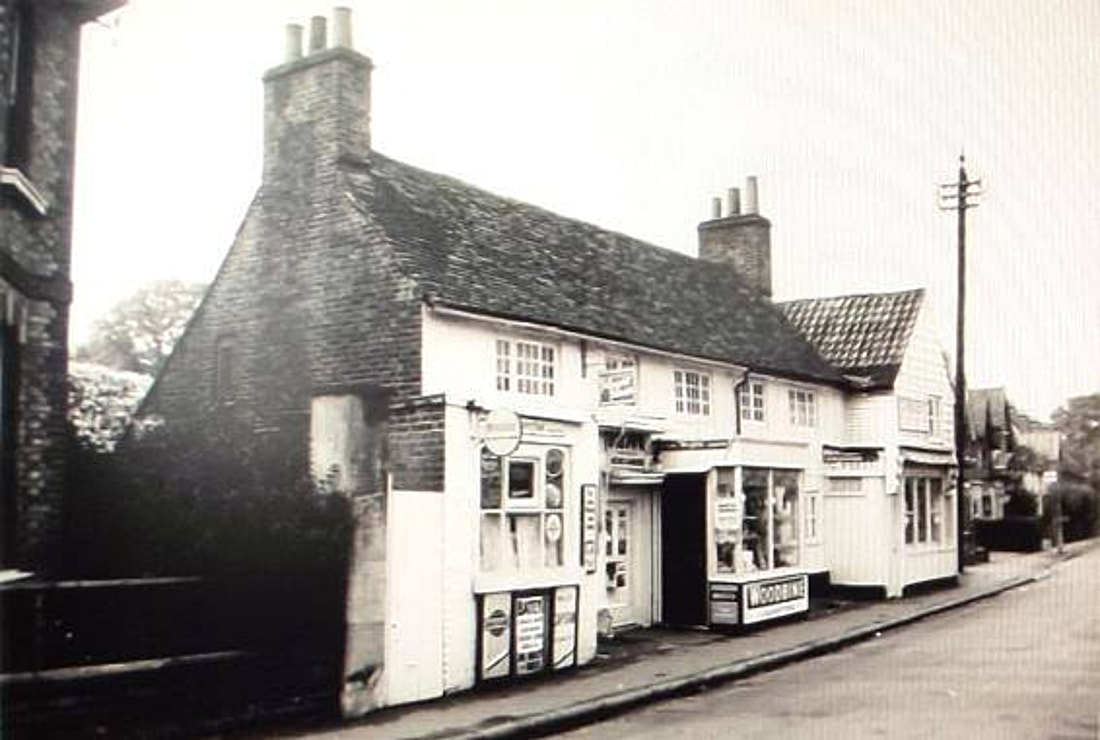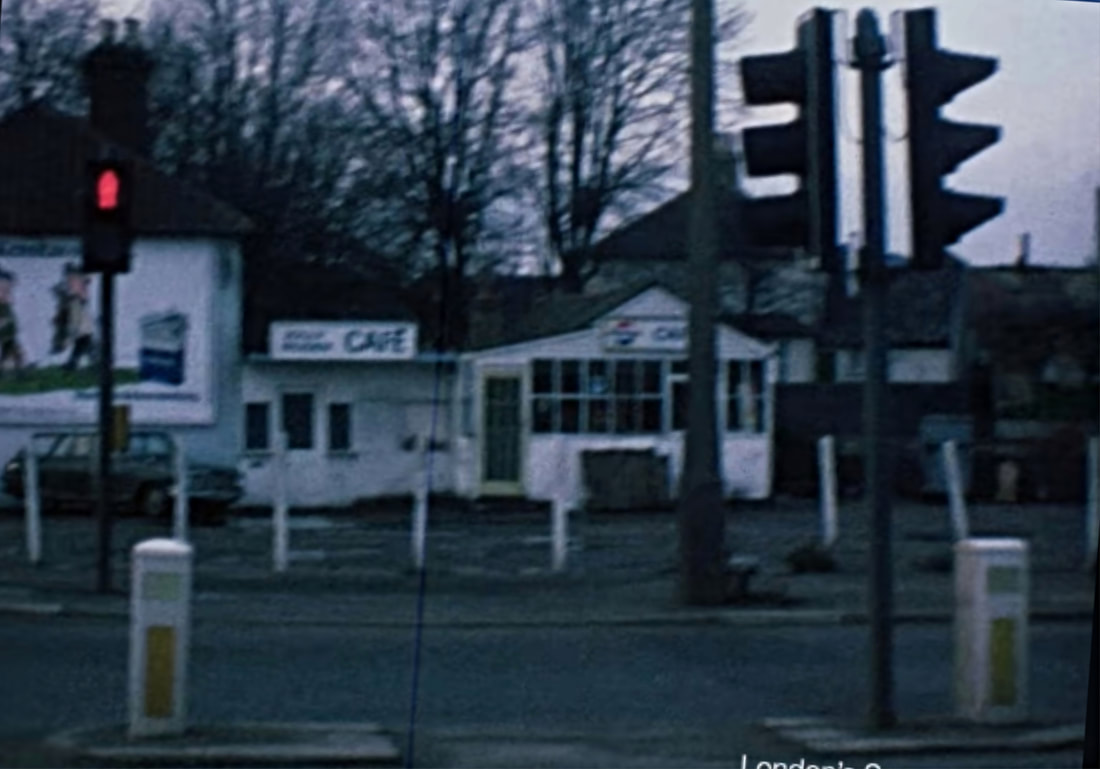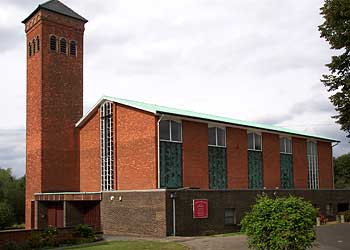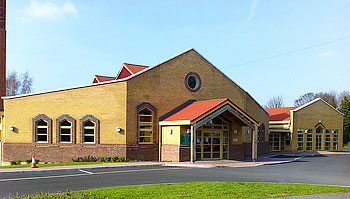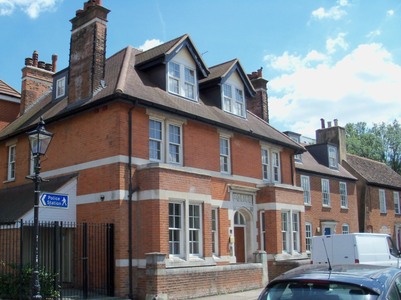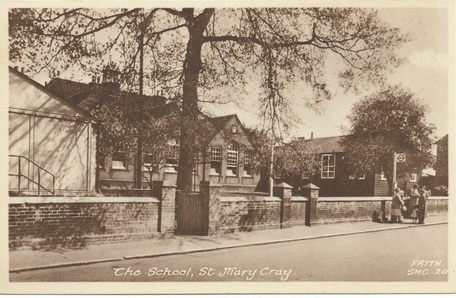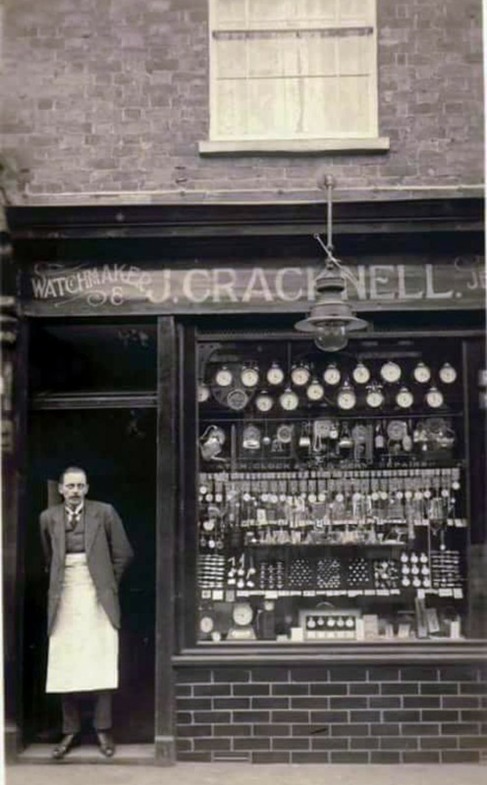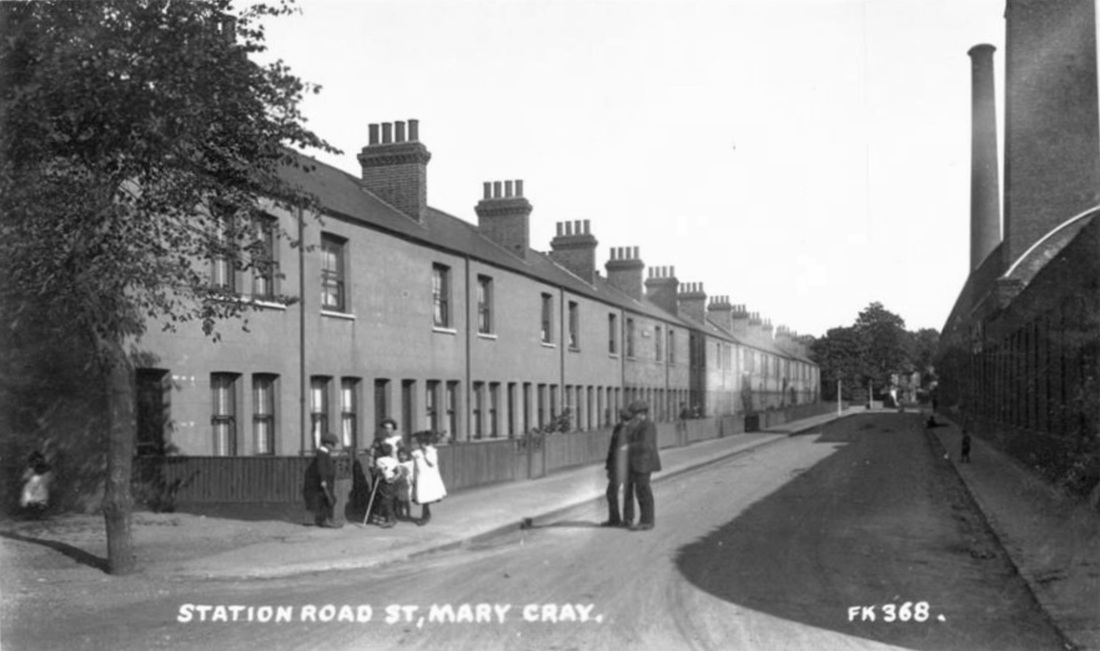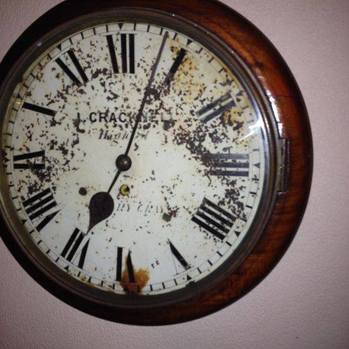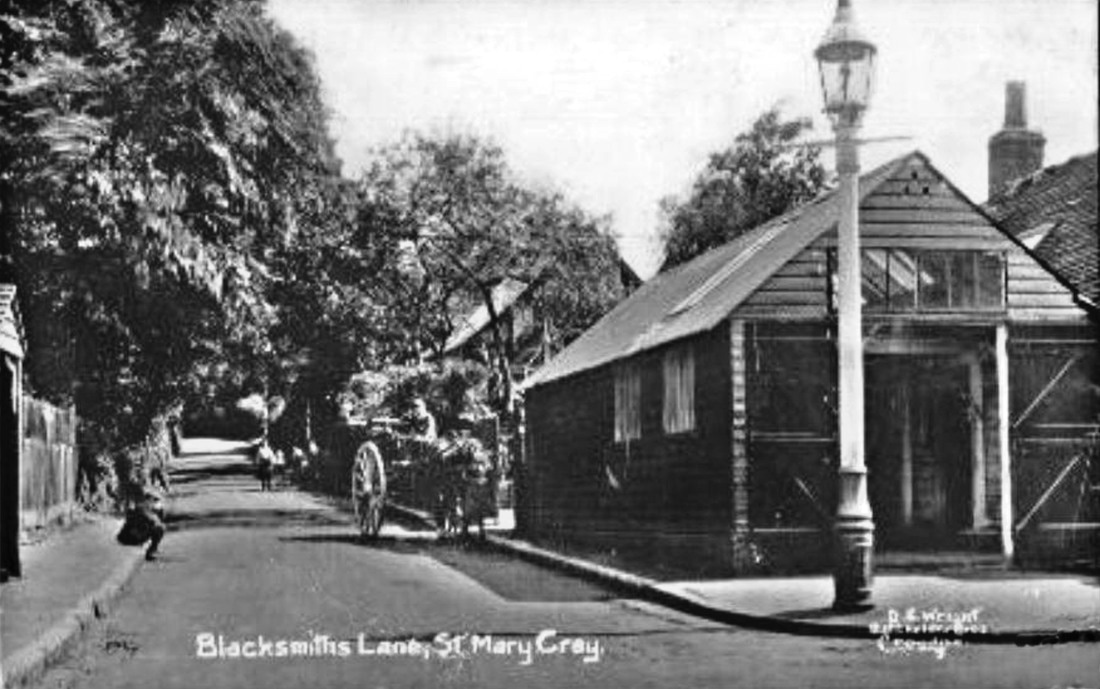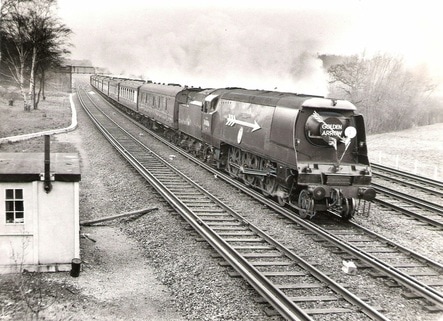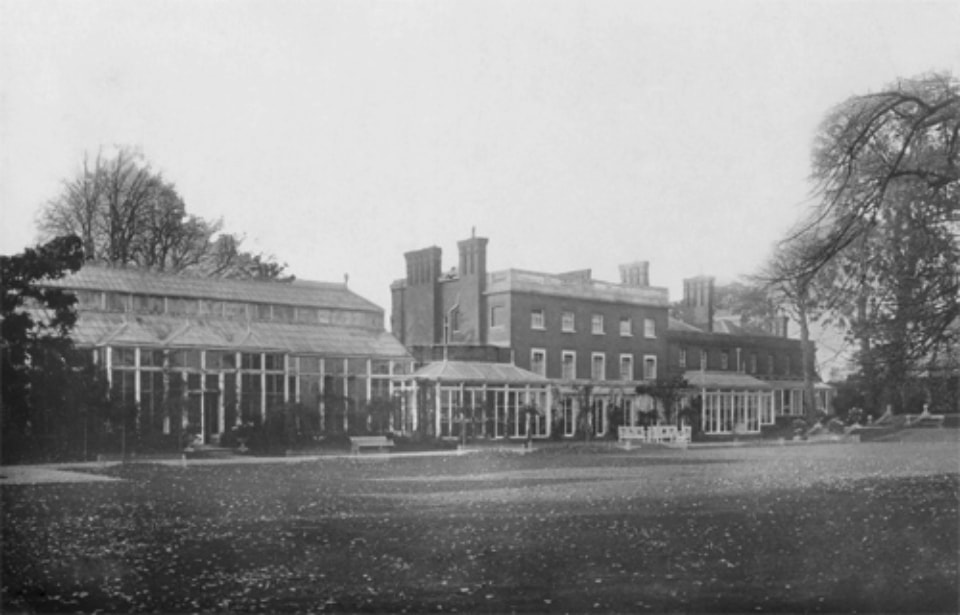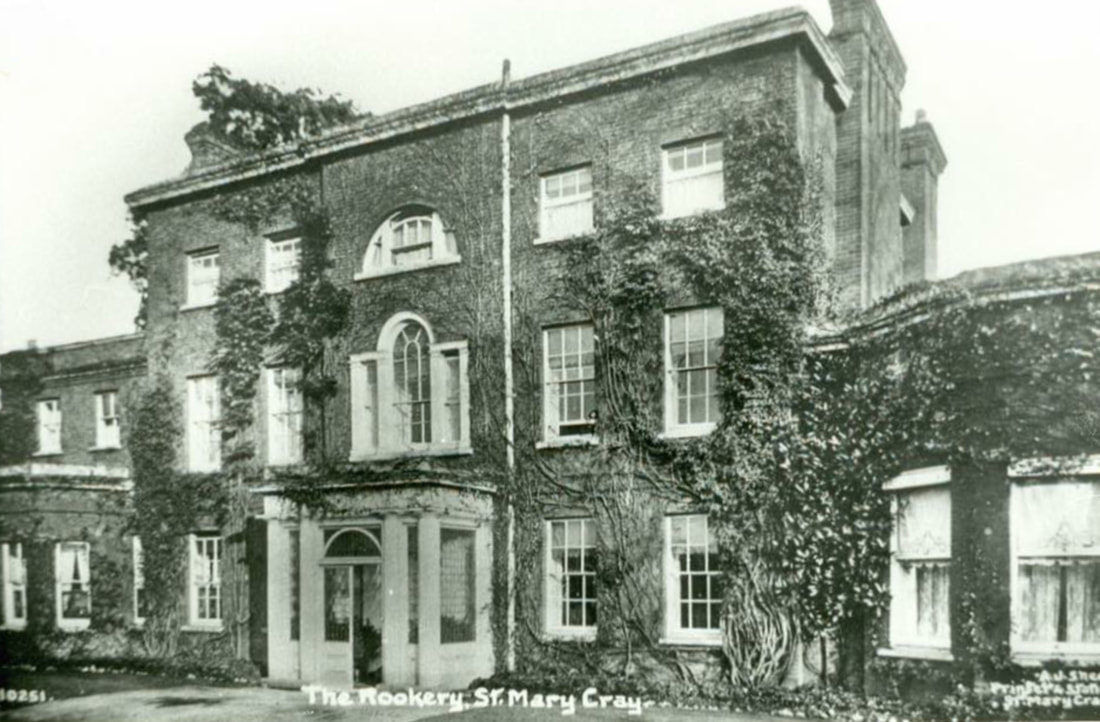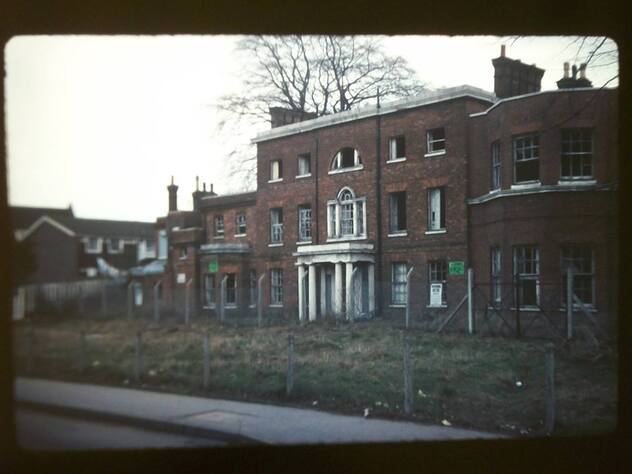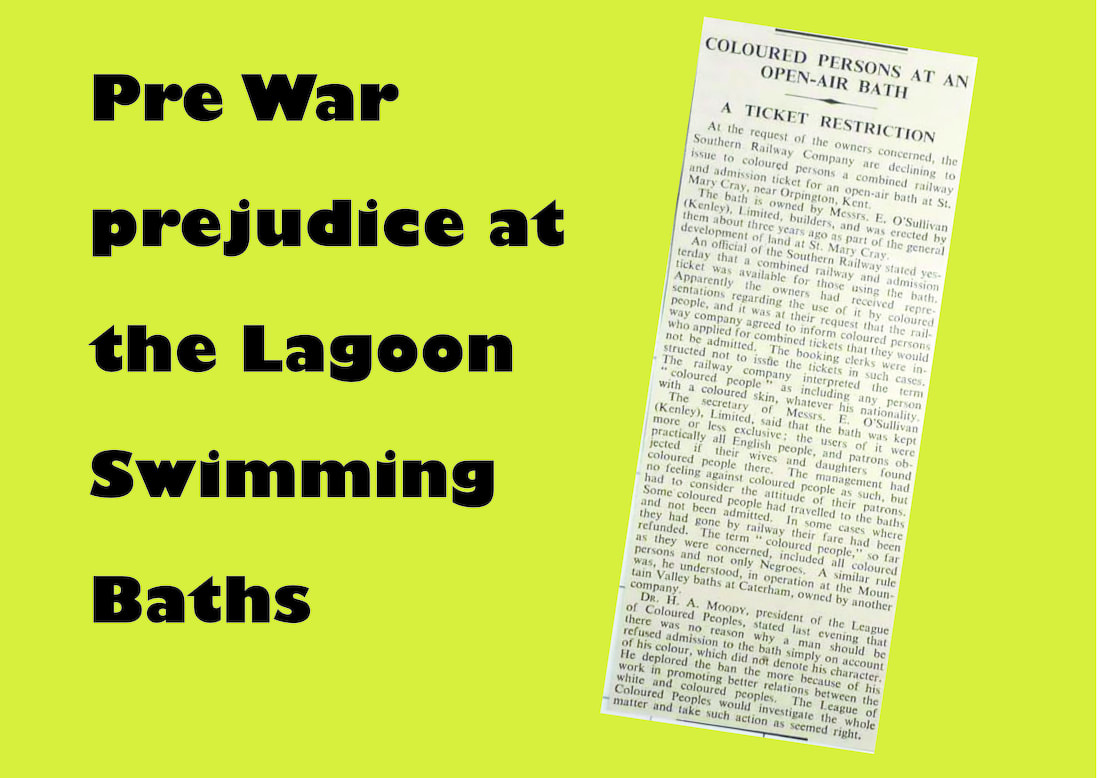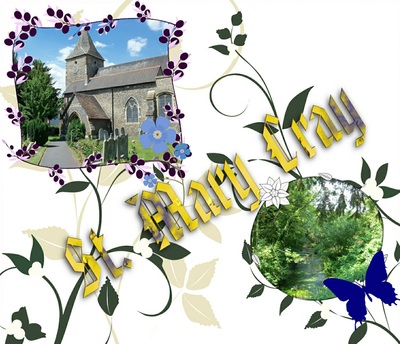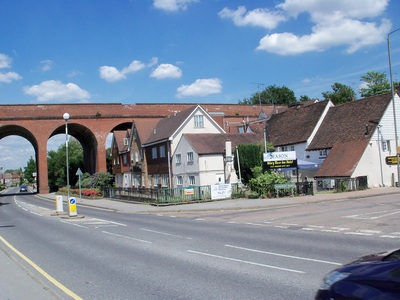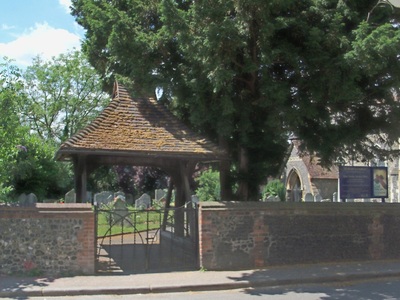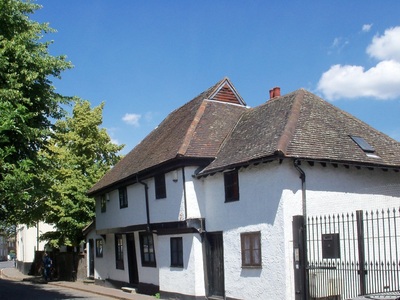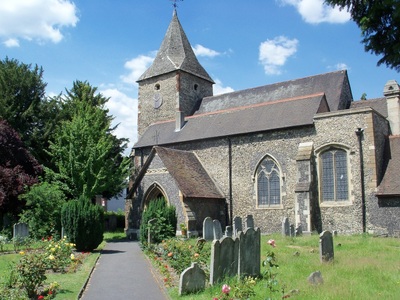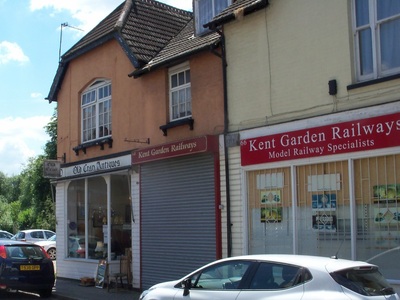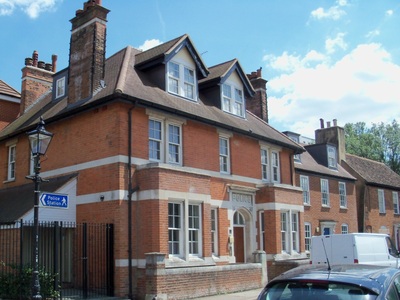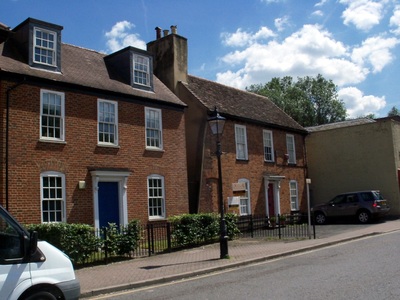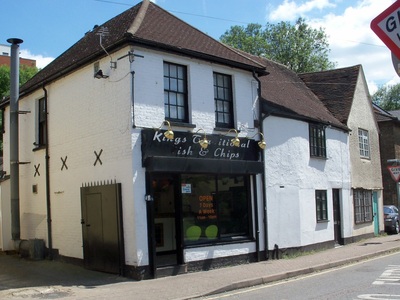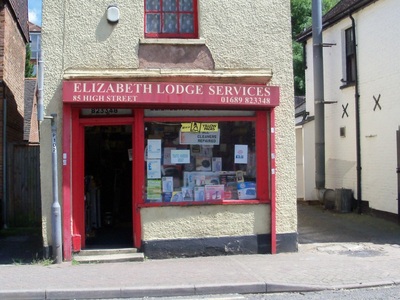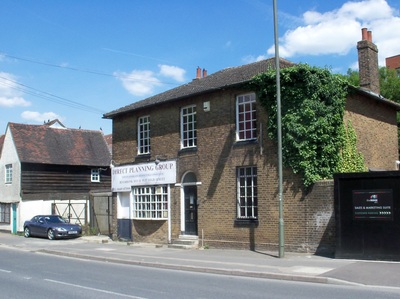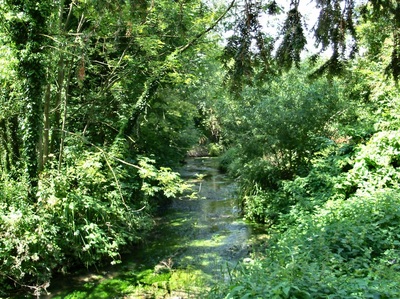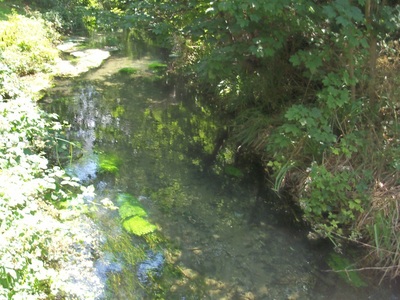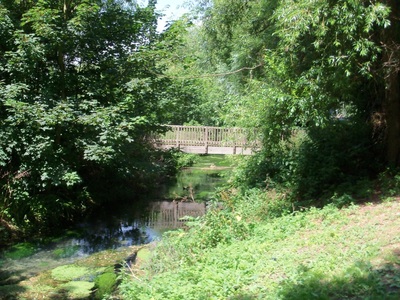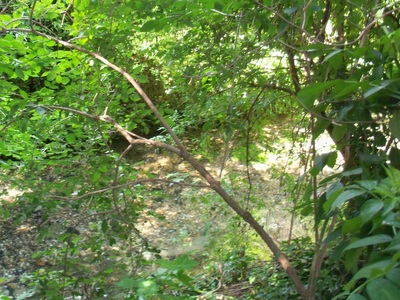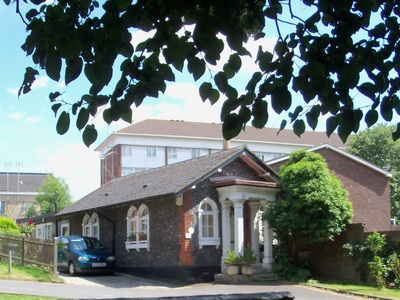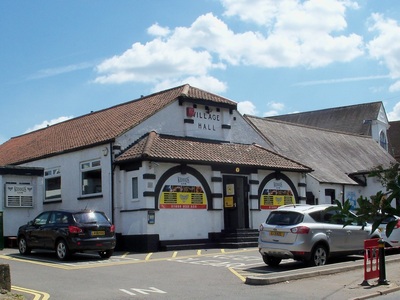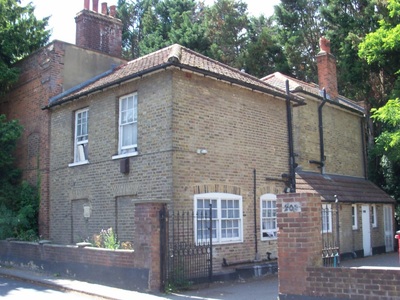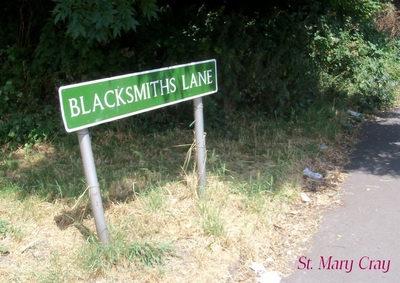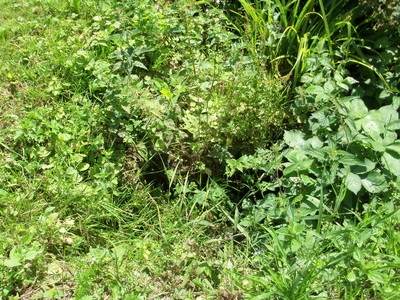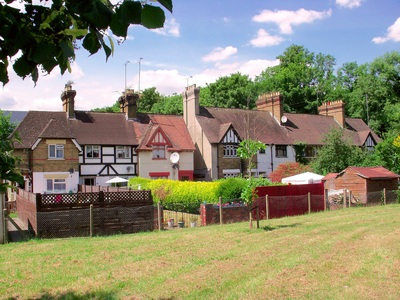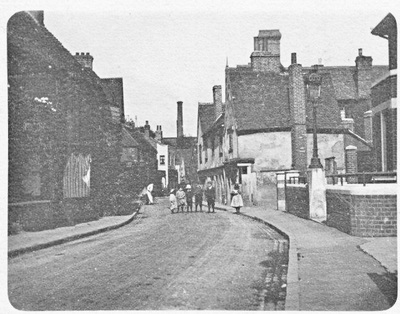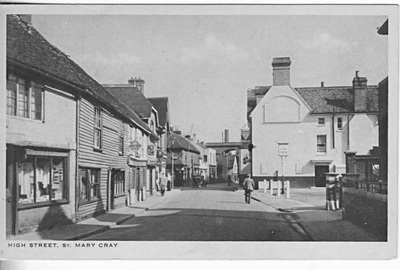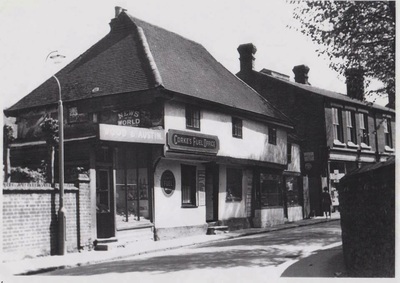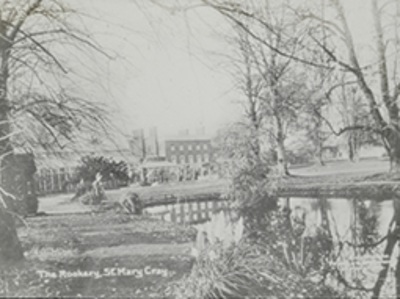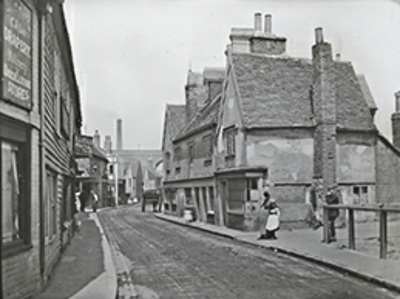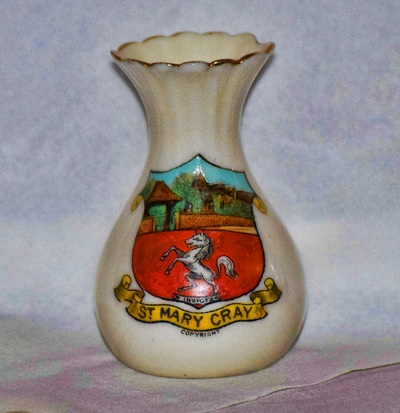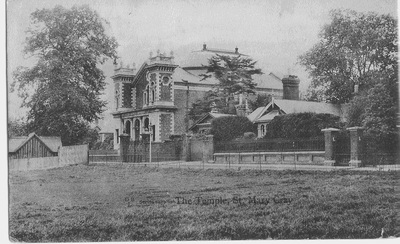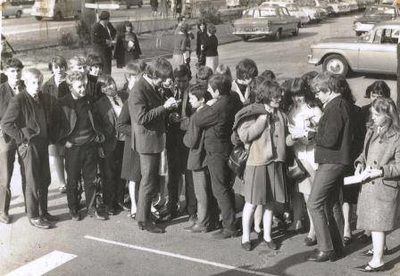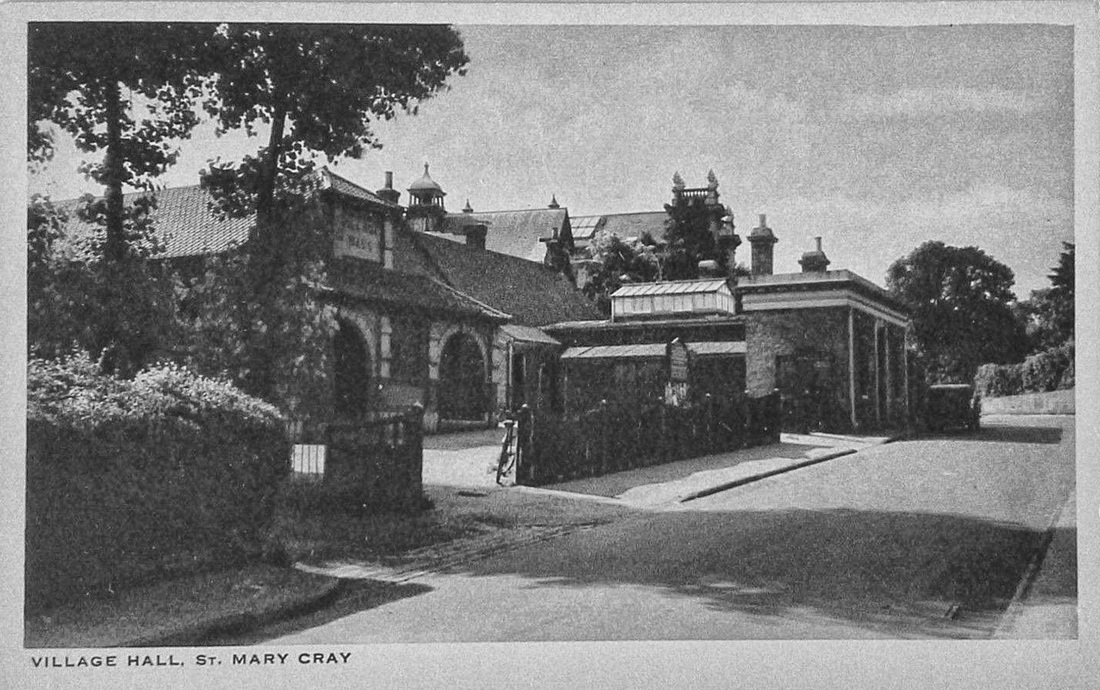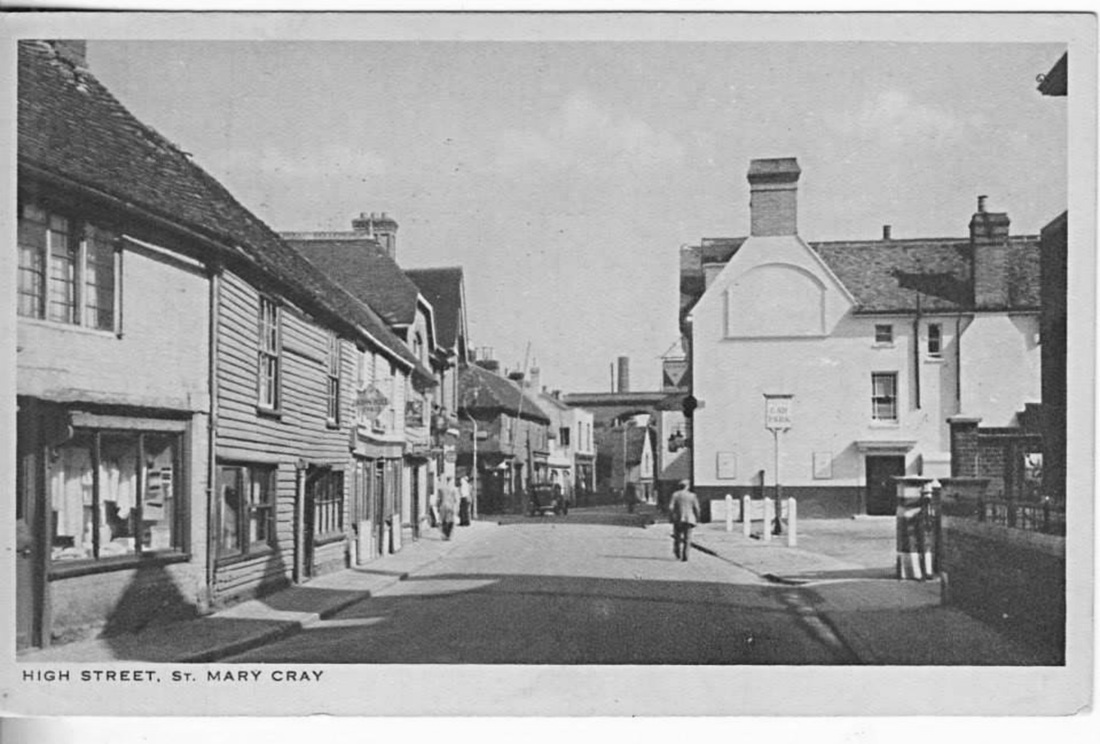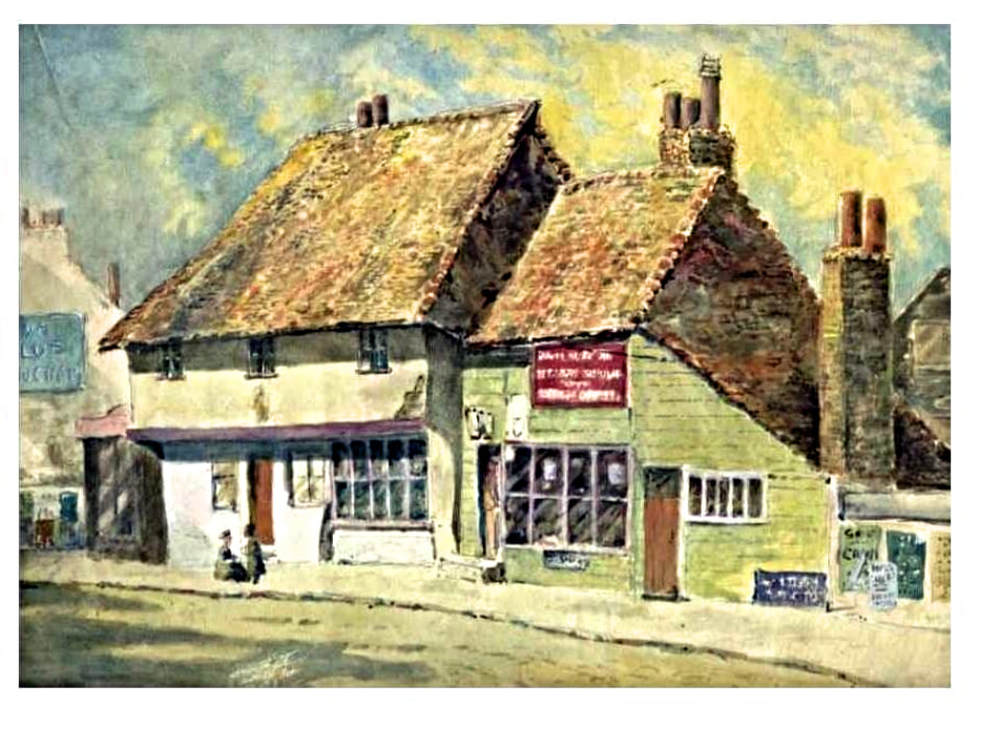 Artist:
Charles Clarke-Irons (painted 1907)
Artist:
Charles Clarke-Irons (painted 1907)
Known today as Survey House, situated opposite the St. Mary the Virgin, Parish Church
AS well as the Parish Church there are two other places of worship along the village High Street: The Temple URC Church and Our Lady Of The Crays/St.Joseph RC. There is a Primary / Junior School, Library and Village Hall, two Post Offices. Now there is a Police Shop instead of the large Police Station that was in the centre of the lower village. There is a hotel The Mary Rose whose building, which was a cobblers and shoemaker until the 60s, goes back a few centuries. Also there is a nice looking Croft Tea Room. There are various eateries in the old village end plus of course some modern coffee and food outlets in the Nugent Centre (on the land of Market Meadow) over the river near the Old Volunteer Fire Station.
Of course a village that thrived for hundreds of years gives something back--football. Cray Wanderers F.C. is a semi-professional club. It is one of the oldest football clubs in the world, the oldest club in London and 2nd oldest in the country. The club was established in 1860, taking players from those working locally.
A MASSIVE tragedy came to the village in 1906 in what is known as the Handcross Hill Disaster when an outing turned bloody with the deaths of 10 men and 26 others injured. The majority of these men were firefighters.
Of course a village that thrived for hundreds of years gives something back--football. Cray Wanderers F.C. is a semi-professional club. It is one of the oldest football clubs in the world, the oldest club in London and 2nd oldest in the country. The club was established in 1860, taking players from those working locally.
A MASSIVE tragedy came to the village in 1906 in what is known as the Handcross Hill Disaster when an outing turned bloody with the deaths of 10 men and 26 others injured. The majority of these men were firefighters.

FOR THOSE not old enough to remember the WW2 but wonder why so little of the village remained here is an account from Margaret Hunter A bomb dropped on the cottages the night the land mine was dropped,and wiped out a row of cottages from Burtons sweet shop to the cut through opposite Blacksmiths Lane. Many people were killed. One lady I think her name was Mrs James was badly injured. She had a chair leg imbedded in her chest and a neighbour managed to get it out with a saw. She survived but was very badly disfigured .Stangers windows were blown out and there was glass all over the High Street. A night never to be forgotten.
The paper mill and associated owners were a big influence on the Village and this Link William Joynson will take you through some of the history of the connection.
|
|
The Rookery owned by General Strover in 1841 (a survey) then William Joynson owner of the paper mill in St Mary Cray
Owned by General Strover, William Joynston then the KCC as a rent office and Education Centre for the area. Later owned by the London Borough of Bromley then mysteriously caught fire. Then demolished

